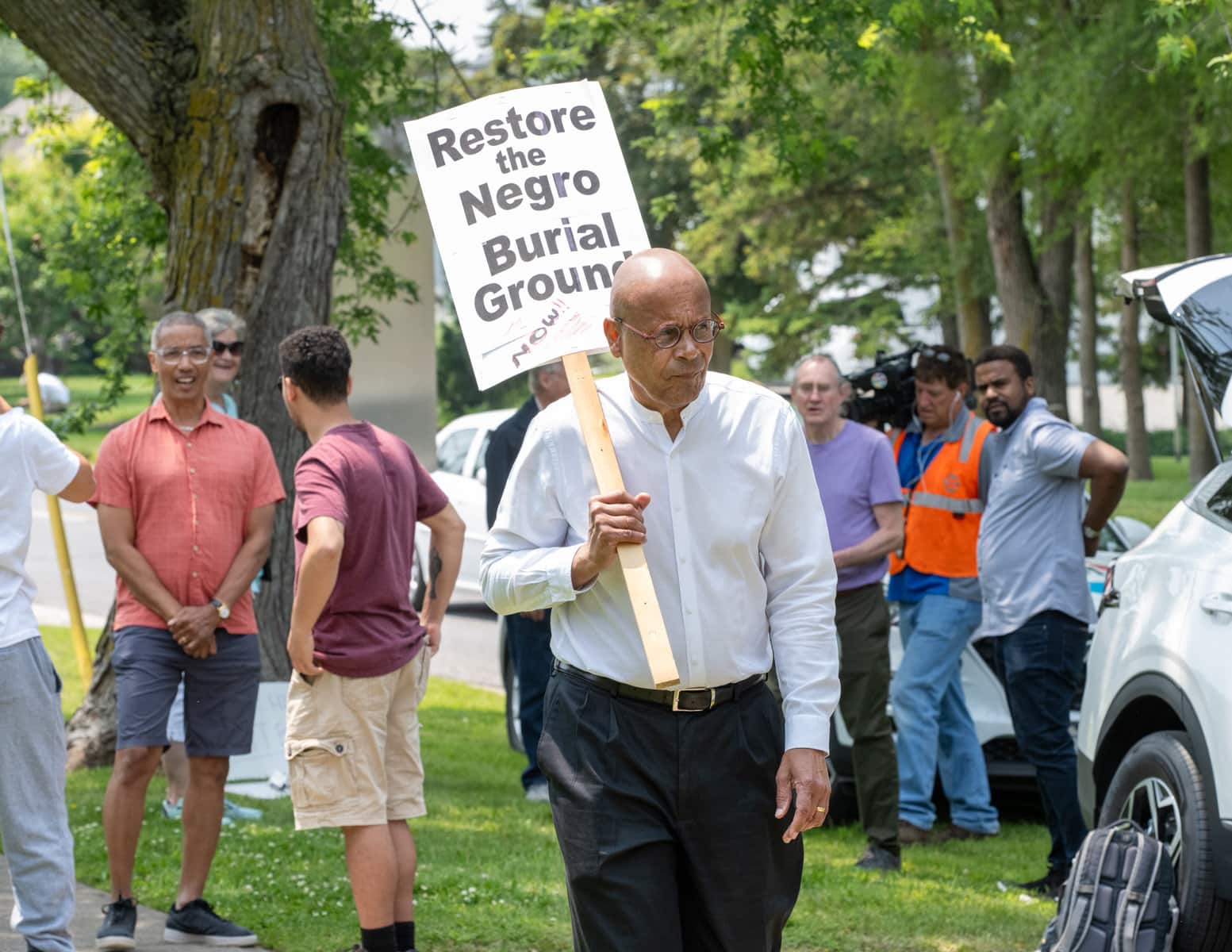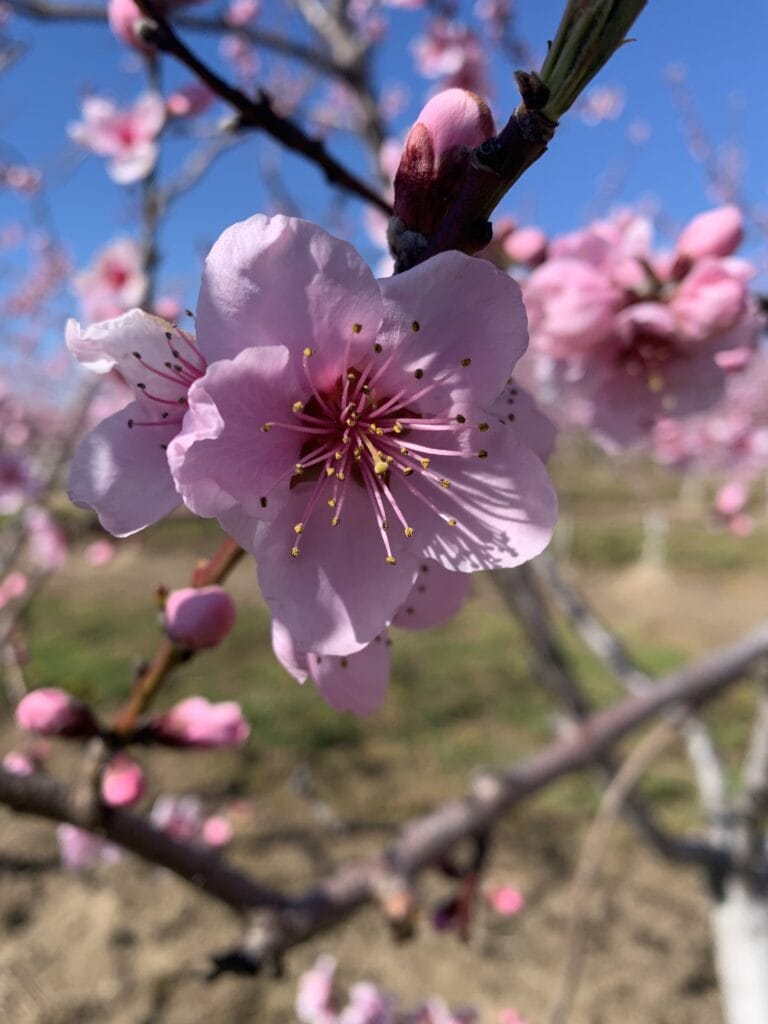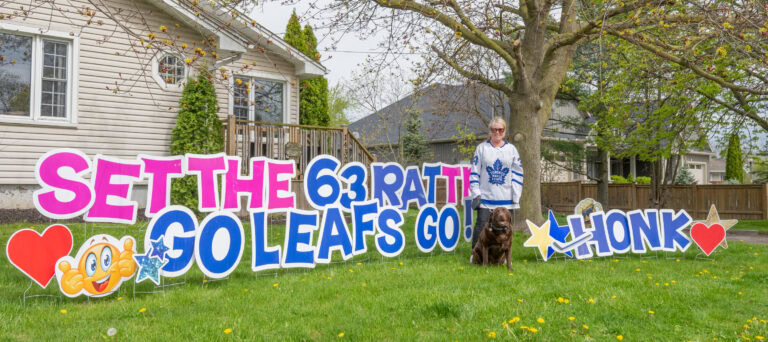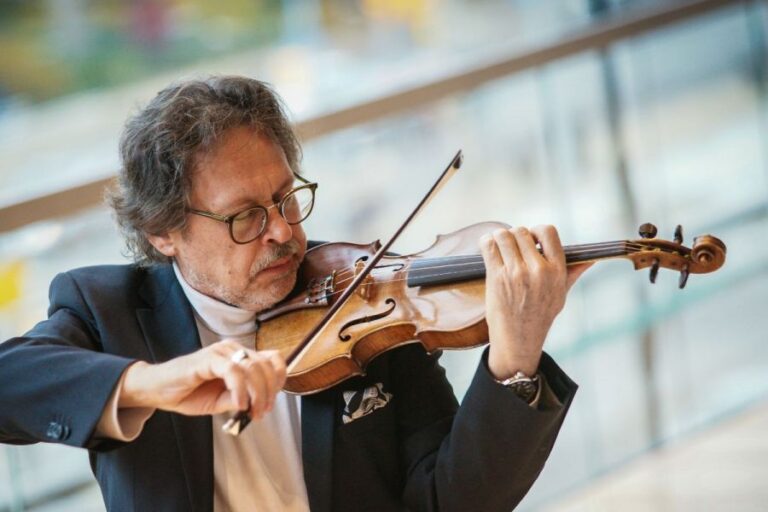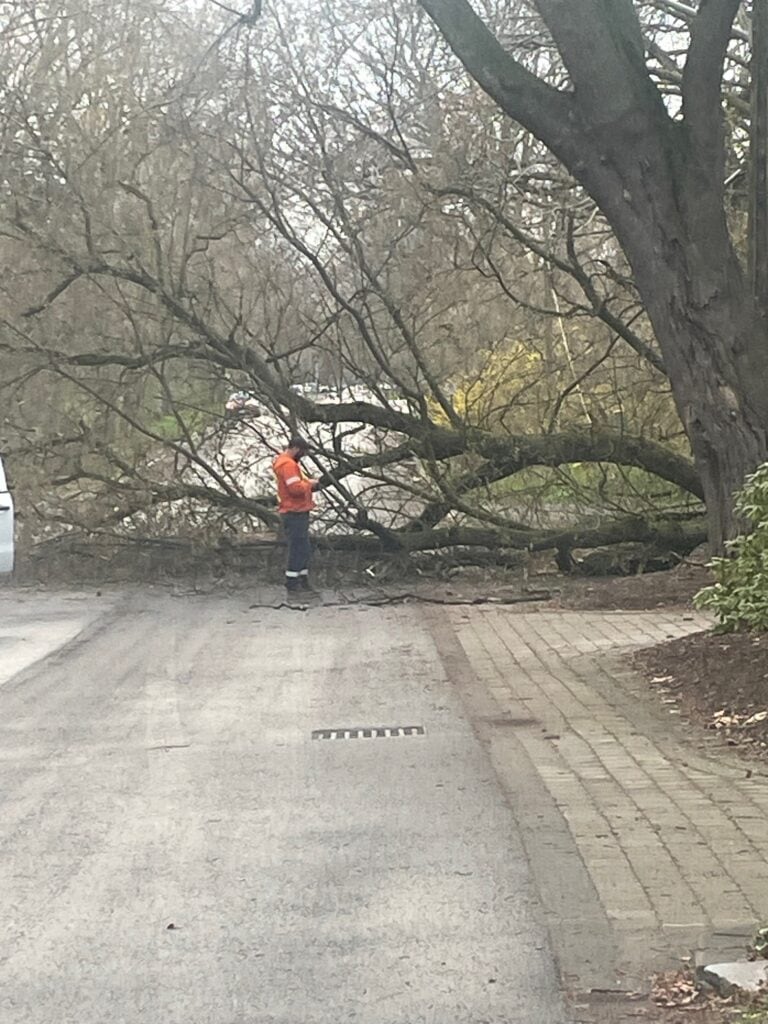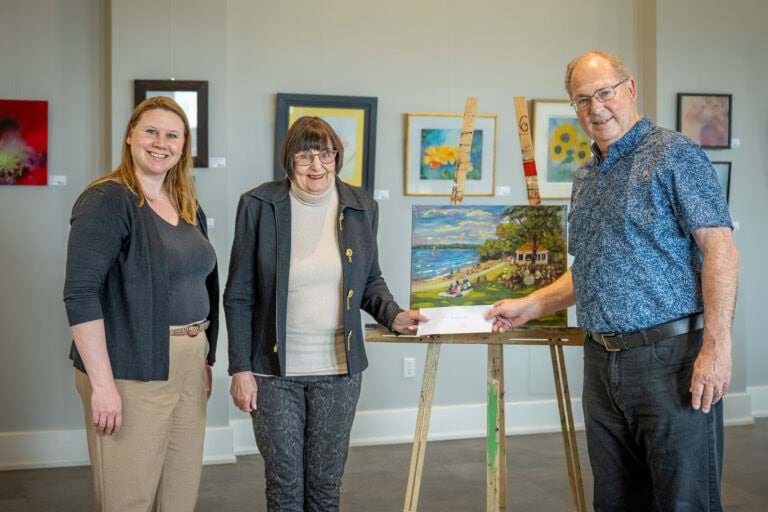The march at the Niagara Baptist Church Burial Ground on Sunday didn’t turn out as planned, but supporters kept their heads high.
“I was hoping there’d be more people here but we’re here, so it doesn’t matter,” said supporter Desmond Brown who drove to Niagara-on-the-Lake from Toronto.
Toronto resident James Russell organized the march to try and compel the Town of Niagara-on-the-Lake to pay for the unearthing of headstones at the gravesite, the final resting place of some of the town’s oldest members of the Black community.
The site is also known as the Negro Burial Ground. Those buried there were members of the Baptist church, some of whom fled from slavery in the United States in the 1800s.
Russell planned to march from the burial site on Mississagua and Mary streets to the courthouse on Queen Street. However, he decided not to march.
About 11 people showed up to the demonstration.
Last year, Russell conducted a ground-penetrating radar survey on the grounds and discovered the possibility of 28 graves and 19 buried headstones on the property.
He believes the town has done nothing to protect and preserve the inactive cemetery for 130 years, he’s told The Lake Report in the past.
He also believes the town purposefully buried the headstones many years ago and should be responsible for paying the $59,000 to unearth them, a quote he received from the Archaeological Research Associates Ltd.
“It’s a legacy — and the legacy is being not just ignored but blatantly erased,” said Brown.
He said $59,000 isn’t a lot of money and the town should pay for it.
“Municipalities waste hundreds of millions of dollars on different projects and different things,” he said.
“For them to refuse to do that, it’s absolutely disgusting.”
Russell declined to speak with The Lake Report after multiple requests for comment.
He said he was upset about previous coverage by this newspaper, calling it unfair and biased.
He complained to the NewsMedia Council about this headline on an April 20 article, “Black cemetery protest called ‘publicity stunt’ and ‘misleading.'”
After reviewing the matter, the council dismissed Russell’s complaint, noting the headline was “supported by the content of the article, which included comments from a number of sources with different perspectives, including (Russell’s) comment referring to (his) actions as ‘a publicity stunt to bring attention and respect back to the folks who are buried there who have been rendered anonymous.'”
At the demonstration, NOTL resident Paul Dolby told The Lake Report he remembers there being more gravestones at the site when he was younger.
He’s lived here since 1966.
“There were probably half a dozen (headstones),” he said.
Today, there are only two headstones visible at the front of the plot of land, belonging to John Oakley, a white pastor at the old Baptist church, and his daughter.
“I worked in Niagara-on-the-Lake years ago, and people would sheepishly tell me that they (the headstones) were in the basements of people’s homes,” said Lezlie Harper from Niagara Bound Tours.
Dolby said it seemed strange that the town never spent any money on the Niagara Baptist Church Burial Ground.
He suggested putting a headstone with all the names of the people buried there or leaving it natural, like a park.
On Friday, the town released a statement in anticipation of Sunday’s demonstration.
The town outlined what it has done to date and how the town is working with a citizen-driven committee, the Friends of the Forgotten, to restore and memorialize the site.
The town has also previously declined Russell’s claims that the headstones were purposefully buried, but that they were laid down in order to prevent damage.
“We both want the same things but we bring about it in two very different ways. And that’s been the challenge all along,” said George Webber, head of the committee.
He said he is aware this won’t be the last they see of Russell, he said.
He said some committee members find what Russell is doing “impacts our work tremendously because residents are unsure and unclear in their mind who the Friends of the Forgotten are, and who James is.”
He encourages people to visit the Friends of the Forgotten’s website to see what they’re all about.
Sarah Kaufman, the Niagara-on-the-Lake Museum’s curator and member of the Friends of the Forgotten, said the museum is disappointed Russell is saying the town is doing nothing to preserve Black history.
“It’s simply untrue,” she told The Lake Report.
Kaufman said the museum has been “actively promoting Black history for a number of years.”
She made note of the Voices of Freedom Park, which was the town’s idea, and the Voices of Freedom walking tour that the museum offers.
Through fundraising, the Friends of the Forgotten raised enough funds to pay for a stage one archeological assessment. The findings will be presented to the council next week.
There are four stages to the archeological assessment, as requirement by the Bereavement Authority of Ontario. Stage two would be the next step needed.
Rochelle Bush, owner and guide of Tubman Tours Canada, said the Niagara Baptist Church Burial Ground is the flagship attraction for Niagara-on-the-Lake on Niagara’s Freedom Trail.
Regarding the archeological process at the burial ground, she said there’s “no other way around” working with the Bereavement Authority of Ontario (BAO).
“What James is doing, there’s nothing wrong with it, he’s very passionate about it, but you still have to work with the BAO,” she said.
Bush has been working with a group on a project at the Victoria Lawn Cemetery in St. Catharines to unearth the headstones of formerly enslaved people who fled here from the United States in the 19th century.
When it comes to the burial ground in NOTL, she believes the stones should be unearthed.
“What if Herbert Holmes is buried there? What if Jacob Greene is buried there? People suspect they’re buried there, but what if they actually have tombstones?” said Bush.
“That would be magnificent because of their involvement with the Solomon Moseby affair,” she added.
According to the Ontario Heritage Trust, Moseby was an African-American freedom seeker who fled his enslaver in the spring of 1837, settling in Niagara. However, his enslaver found him a few weeks later with papers calling for his arrest and extradition.
Herbert Holmes and Jacob Green were two Black residents of Niagara who, among over 200 supporters, protested to block Moseby’s extradition. They were killed in the protest, but Moseby managed to escape and fled to England, later returning to live in Niagara.
Bush said even if it takes five years to unearth the headstones, they need to just get it done.
Webber doesn’t believe unearthing the headstones is necessary, but said there’s “an argument to be made for unearthing the headstones and seeing what’s written there.”
“Just put one foot in front of the other and take it one step at a time,” Webber said, describing his approach to the project.
Harper said the names need to be recognized and the town needs to “show respect.”
Webber also said that in the new fiscal year, he plans to ask the town for money toward the burial site.
“For the new fiscal year when submissions are being made to town for money to be built into their budget, I plan on being there to make a request of the town to contribute some amount of money (to the burial ground),” said Webber.
During the demonstration, CHCH News reported an incident which involved a woman yelling racist comments at Russell.
They reported a woman in a red sports car pulling up beside Russell and yelling, “Go back to Africa.”
The Lake Report didn’t hear or see this happen.
“It’s a bit unsettling as well to know that exists in the same community that we live (in),” said Webber.
– With files from Julia Sacco



